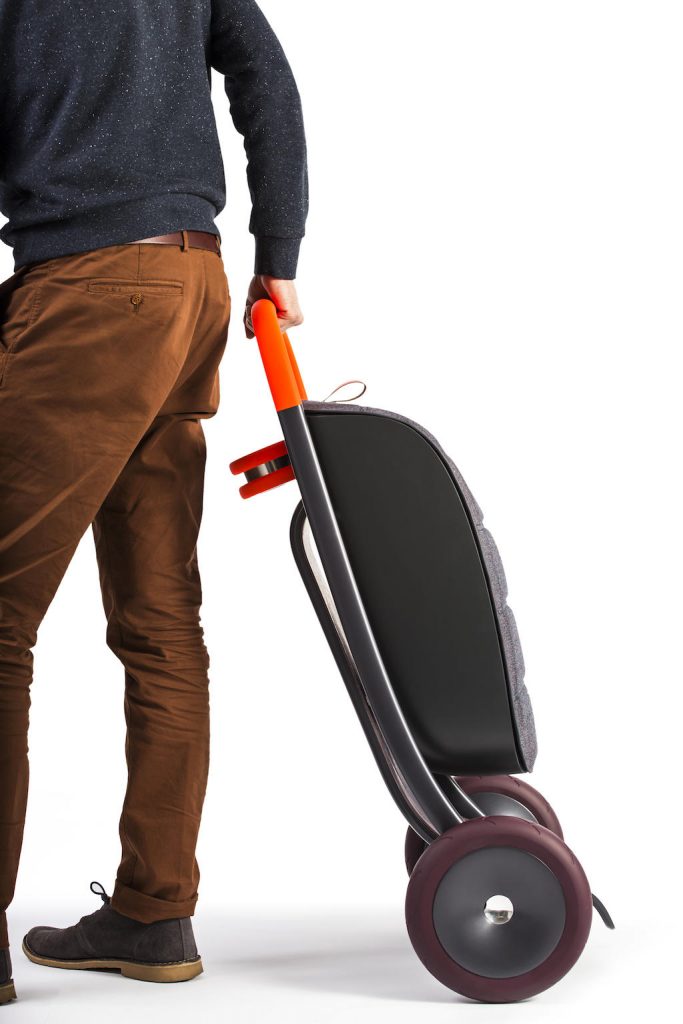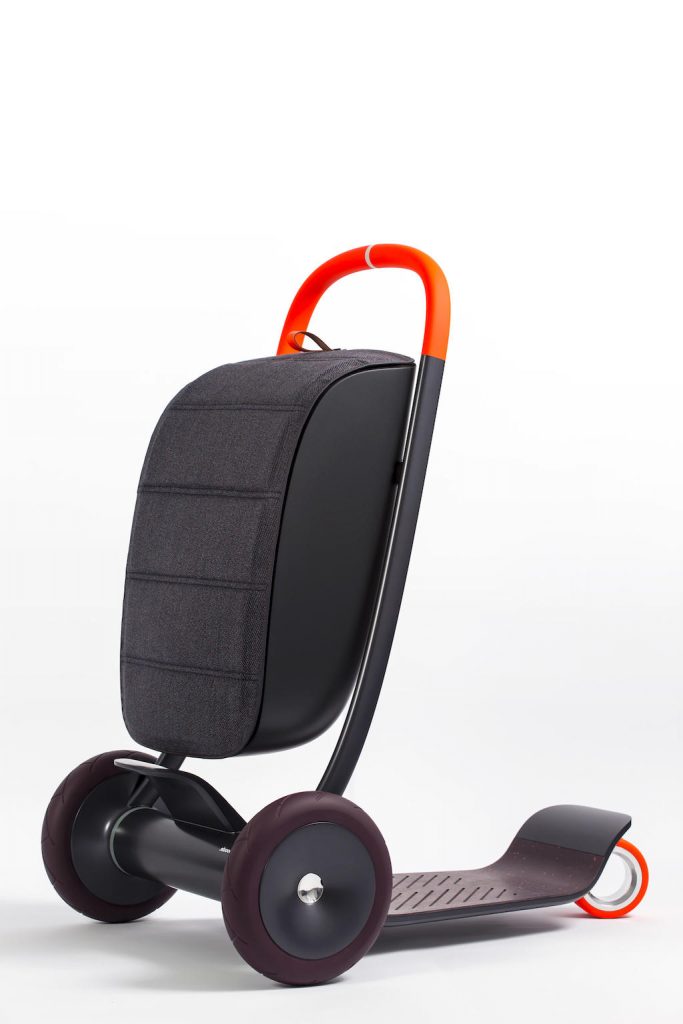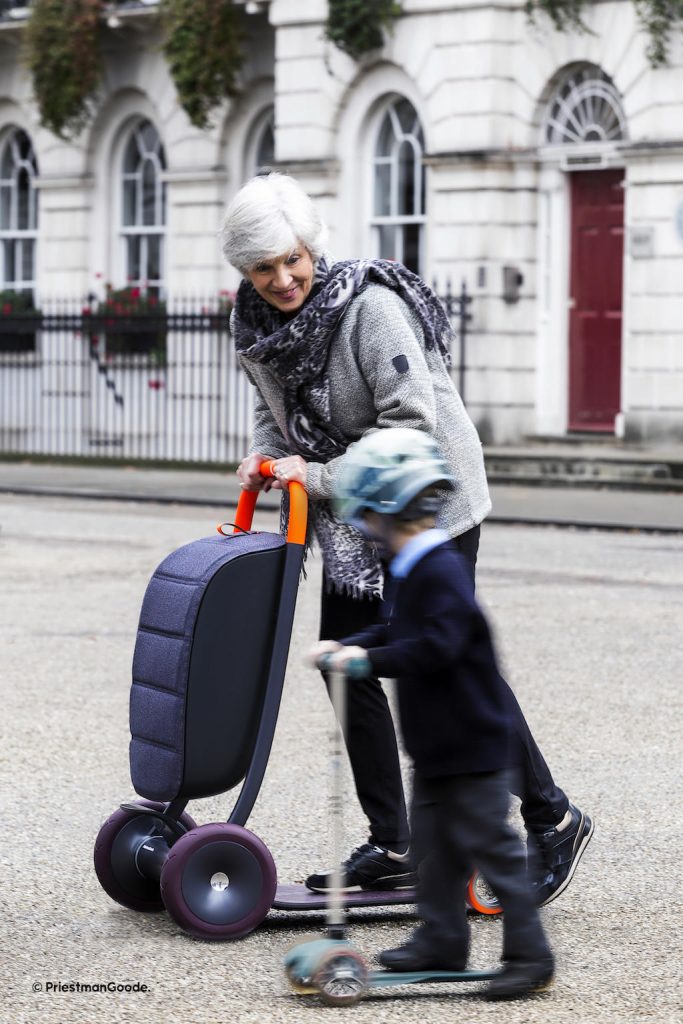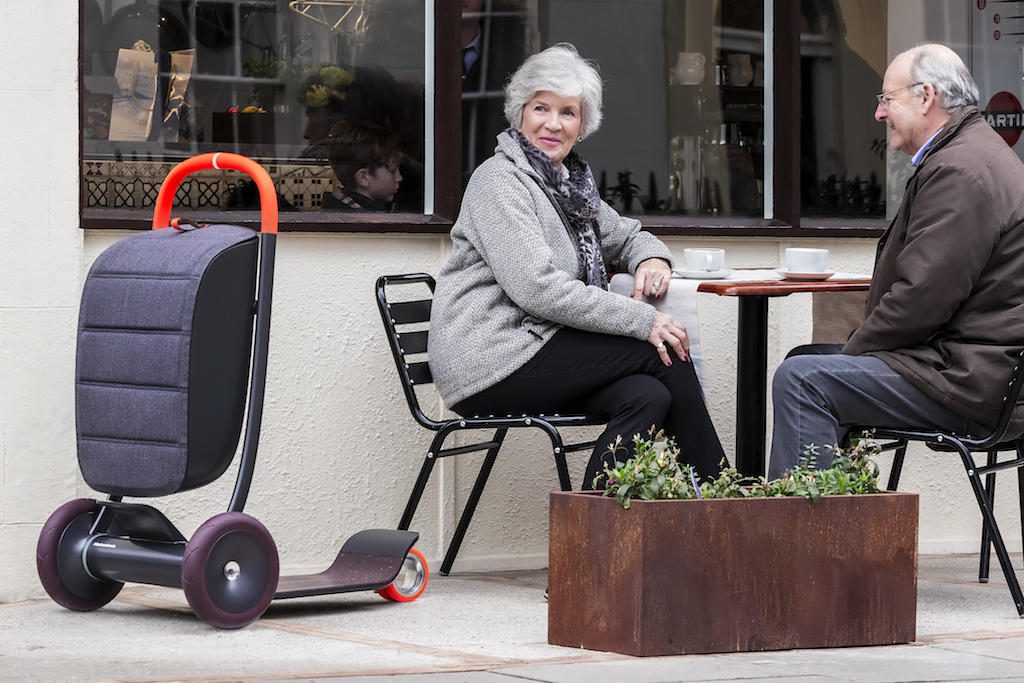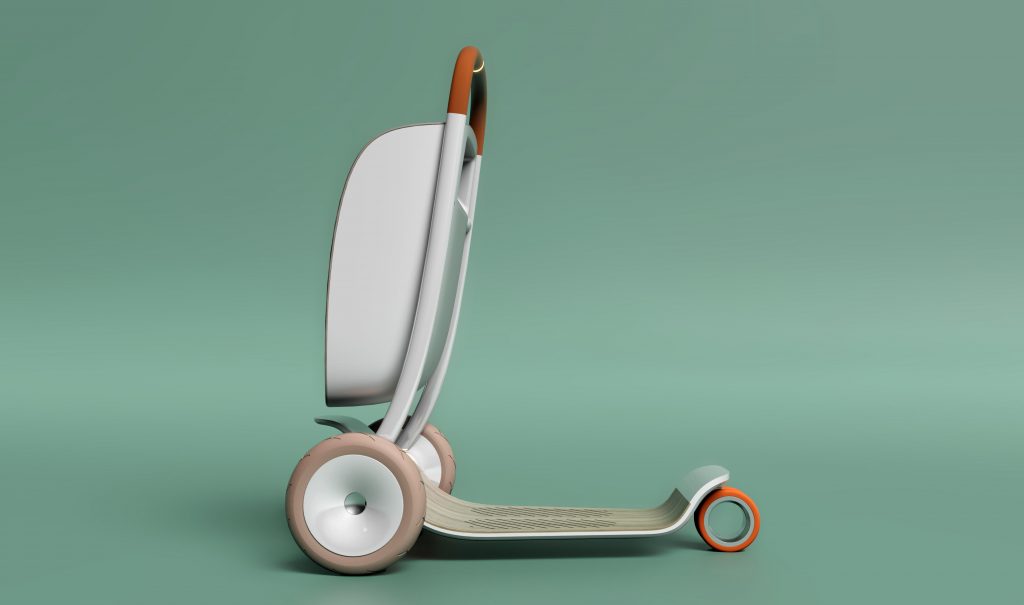 Presented in the New Old exhibition at the Design Museum in London the Scooter for Life is a prototype designed by the leading London design studio PriestmanGoode for older demographics, which aims to provide users with more independence through greater mobility.
Presented in the New Old exhibition at the Design Museum in London the Scooter for Life is a prototype designed by the leading London design studio PriestmanGoode for older demographics, which aims to provide users with more independence through greater mobility.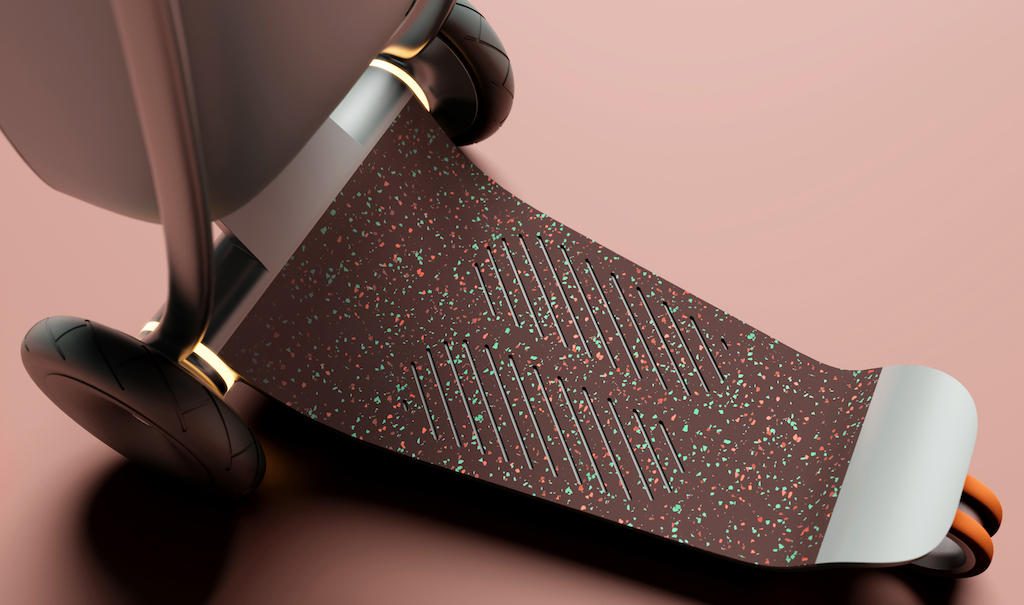
Paul continues: “We wanted to design something that was both beautiful as well as highly practical. We discussed what requirements people had for a mobility aid and came up with a list of boxes that our solution would need to tick: you had to be able to take it on public transport, to take it into a shop, it needed to be able to fold down, there needed to be space to store groceries, and it had to be able to be taken into a flat or a house.”